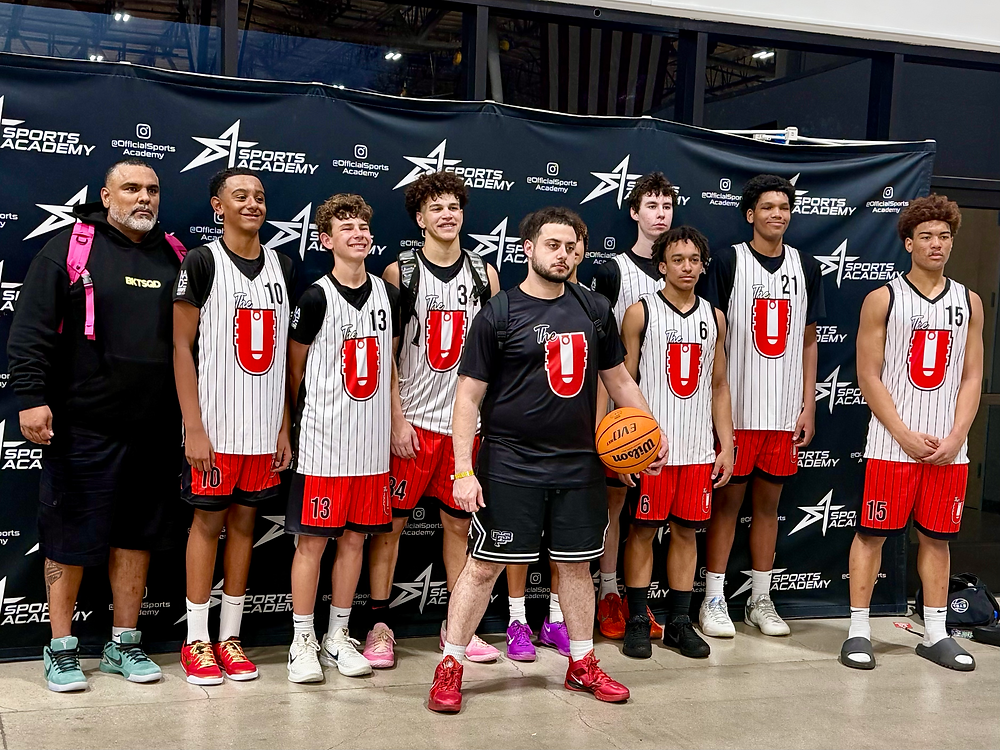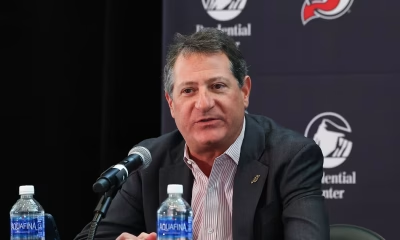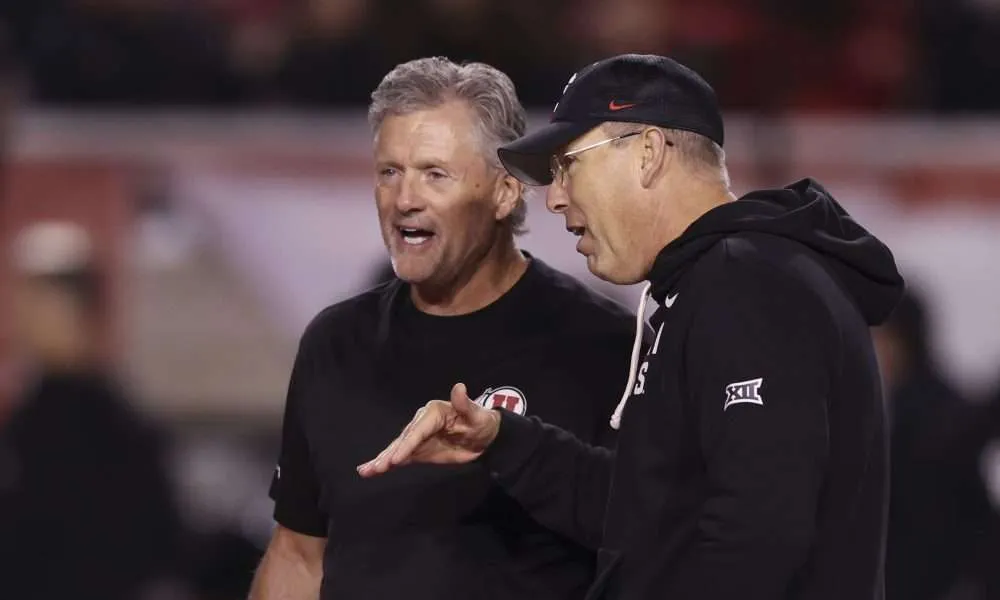
Rec Sports
MD high court rules for soccer club, Baltimore County in concussion case

Key Takeaways:
- Maryland Supreme Court affirms no liability for concussion injury
- Soccer club and county employees cleared over lack of proximate cause
- Court says concussion law aims for awareness, not injury prevention
- Ruling impacts future negligence claims in youth sports cases
A private youth soccer team, its associates and Baltimore County employees are not liable for alleged negligence when a 14-year-old player sustained a concussion during an indoor soccer practice, the Maryland Supreme Court affirmed Thursday.
In a 6-1 opinion with Justice Steven Gould writing for the majority, the Maryland Supreme Court upheld the state’s appellate court in finding Sydney Walton and her family produced no evidence that Walton’s concussion sustained at a Baltimore County-owned facility was caused by an alleged violation of a statute requiring participants in youth sports be provided with information about the risk of concussions.
The Walton family alleged Premier Soccer Club and several Baltimore County employees breached the standard of care owed to Walton by allowing her and the team to practice without first receiving information about concussions and head injuries, as required by a 2011 Maryland law.
The high court ruled that the Baltimore County Circuit Court’s grant of summary judgment in favor of Premier Soccer Club was legally correct because the Waltons neither put the concussion policies in the summary judgment record nor asked the circuit court to take judicial notice of the policies, meaning the circuit court “had no evidentiary basis to find a dispute of fact on the issue of proximate cause.”
Even if the Waltons had included the concussion policies in the summary judgment record, it would not have changed the outcome, Gould wrote, noting the Waltons’ argument “depends on numerous speculative assumptions” and “would require a jury to guess.”
“The statute’s purpose was to ensure that coaches, youth athletes, parents, and guardians possess awareness to reduce risk and appropriately handle concussions when they occur, not to eliminate the risk of concussions entirely,” Gould wrote for the high court’s majority. “Because the statute itself assumes that concussions may occur despite compliance, it would be illogical to permit a jury to speculate that compliance would have prevented Sydney’s specific injuries.”
Ray Shepard, counsel for the Waltons, said his clients are disappointed in the ruling and hope the Maryland legislature will take notice of the decision.
“We believe the legislature intended through the legislation to prevent concussions among youth athletes in the state, not just react to concussions after they occur,” Shepard said in an email Monday. “Perhaps the legislature will act to clarify the law and specifically create liability for coaches and youth sports programs who put kids at risk without properly educating themselves, the parents, and players about concussion prevention. What we have now is basically a toothless tiger type of law that doesn’t achieve one of its intended purpose s— prevention of injury to Maryland’s youth athletes.”
Timothy Dygert, Jr., counsel for Premier Soccer Club, said his clients are pleased with the high court’s ruling.
“We think it was important for the court to clarify what’s required for proximate cause under the statute or ordinance rule, and we think they did a nice job of that,” Dygert said in a phone call Monday.
MORE ON BALTIMORE COUNTY:
Dygert said the ruling also is important for youth sports, including teams and coaches.
“If this case had gone the other way, then it could have exposed youth sports programs and youth sports coaches to unnecessary liability stemming from statutory requirements that are really no more than just handing out paperwork before the start of the season, when those statutes aren’t intended to prevent injuries that are inherent to the sport and when those requirements regarding paperwork aren’t causally connected to injuries sustained on the field of play,” Dygert said.
In a dissenting opinion, Justice Shirley Watts wrote that the majority made a finding with respect to proximate cause that should have been made by the jury.
Watts said the Concussion Awareness Statute (HG § 14-501) is designed to protect coaches, youth athletes and the parents or guardians of youth athletes.
“In this case, the Waltons produced facts that would allow a reasonable jury to conclude that the defendants’ disregard of their obligations under HG § 14-501 was a substantial contributing factor in producing Sydney’s injuries,” Watts wrote. “There was sufficient evidence for a reasonable jury to infer that had Sydney’s coach been provided the concussion policies, which he was required to review, it is more likely than not that he would have chosen to take any of a number of protective measures while the team played indoor soccer.”
Dygert said the broader impact of the majority’s ruling clarifies that there must be proximate cause in civil actions where a plaintiff is using the violation of a statute as evidence of negligence by the defendant.
“The injury still must have resulted because of the alleged violation of the statute,” Dygert said.
Rec Sports
WNBA, F1 Soar, While MLB, MLS Lag

Sports team investments have received outsized attention in recent years, with dozens of new funds chasing market-beating returns in a category that is not correlated with most other assets.
But not all leagues are created equal and returns varied wildly in 2025. In the WNBA, the average franchise value rose 180% year-over-year, according to Sportico’s May WNBA valuations. On the other end, MLS team values ticked up only 6%, as the league grapples with generating more media revenue.
Here is a look at the eight sports entities Sportico valued in 2025 and what is fueling those changes. Leagues are ranked in order of the average team value. Sportico’s NWSL team valuations, which were delayed by a few months, will return in early 2026.
NFL ($7.13 billion)
Owners debated for several years about opening their league to institutional investors, and if they did, what it might mean for franchise values. The pro-PE crowd got its way in 2024, and a flurry of LP deals were inked over the next 12 months.
A half-dozen teams sold stakes at valuations of at least $8 billion, led by the Koch family’s purchase of 10% of the New York Giants at a valuation just over $10.5 billion. Almost no one thinks these LP deal values are at premiums to control ones, as can happen in startup leagues or with tiny stakes.
Sportico’s NFL valuations were led by the Dallas Cowboys at $12.8 billion, with the Cincinnati Bengals at No. 32 ($5.5 billion). The one-year average jumped 20%.
“Private equity represents a sea change for the NFL, and you have almost every team talking to the approved PE firms,” Jeffrey Kaplan, Andalusian Sports Advisors co-founder, told Sportico in August. “It makes a lot of sense for NFL teams to consider the role of minority private equity capital.”
NBA ($5.51 billion)
The average NBA franchise value is up 113% from 2022, as a half-dozen teams were sold since then at ever-escalating prices. The latest was Mark Walter’s $10 billion buy of the Los Angeles Lakers that blew past the previous record sale for any sports team. William Chisholm’s group bought the Boston Celtics months earlier in a deal that valued the first tranche at $6.1 billion.
The Golden State Warriors led Sportico’s NBA valuations for the fifth straight year at $11.33 billion—only the Cowboys rank higher among global sports franchises. The league’s “get-in” price is $4 billion, with the Memphis Grizzles at No. 30, and the average rose 20%, matching the NFL’s gain.
League revenue is projected to hit $14.3 billion during the 2025-26 season, up 12% from last season. It marks Year 1 of the new media contracts with Amazon, ESPN/ABC and NBC that will bump each team’s TV revenue from $103 million to $143 million. The payouts rise roughly 7% per year on average, resulting in each team on track for $281 million for the 2034-35 season, based on a 30-team league. Forty years ago, each NBA team received roughly $1.5 million from national TV.
Formula 1 ($3.42 billion)
The 10 teams on the grid in 2025 rose 48% in value and are now more than double Sportico’s 2023 F1 team valuations, when the average was $1.61 billion. Ferrari was on top for the third straight year at $6.4 billion, but Mercedes ($5.88 billion) and McLaren ($4.73 billion) closed the gap at the top with their values up 49% and 78%, versus 34% for Ferrari.
“It’s a great time to be in Formula 1, as I think the pie is growing for everyone,” Jefferson Slack, Aston Martin’s head of commercial operations, said in a November interview. “The sport is moving towards a very healthy ecosystem. I think it is already there.”
Control sales are rare in F1, with only 10 teams ahead of Cadillac’s entry in 2026, but teams have sold LP stakes in recent years that reflect investor appetite for the race series that has thrived under Liberty Media’s ownership and the introduction of cost caps. The biggest deal was CrowdStrike CEO George Kurtz buying 5% of Mercedes from its CEO and principal Toto Wolff at a $6 billion valuation.
MLB ($2.82 billion)
The New York Yankees lead the way at $8.39 billion, but the Los Angeles Dodgers ($7.73 billion) have closed the gap between the sport’s two financial titans. The valuation gap was $2.1 billion in 2022, but was $660 million in Sportico’s 2025 MLB valuations.
In 2024, the Dodgers became the first MLB team to reach $1 billion in gross revenue, thanks to the arrival of Shohei Ohtani, a World Series run and the biggest TV deal in the sport. The only other sports teams in the world to hit that mark are the Cowboys and LaLiga giants Real Madrid and Barcelona.
The Dodgers’ 23% increase and double-digit bumps for the Philadelphia Phillies ($3.39 billion) and San Diego Padres ($2.31 billion) drove the average value up 7%, but the gains aren’t consistent all the way down as the league grapples with a series of challenges that are intertwined with revenue disparity, media distribution and looming labor negotiations.
Global Soccer ($2.33 billion)
Sportico’s 50 most valuable soccer teams include 19 MLS franchises and 14 EPL clubs. Europe dominates the top of the financial table with six Premier League clubs in the top 15 and three each from LaLiga and Serie A. But MLS heavily populates the bottom 70% of the list, led by Los Angeles FC at No. 16.
The top 30 non-MLS teams were valued in May at $2.33 billion on average, with Real Madrid first at $6.53 billion, up 8% and ahead of Manchester United ($6.09 billion). Real Madrid is the first soccer club to generate €1 billion in operating revenue, and its fortunes soared with the five-year, $1.2 billion renovation of its Santiago Bernabéu Stadium.
Revenue multiples remain the standard by which most bankers value sports franchises. In MLS, teams are valued at an average of 9.4 times revenue, versus 4.9 times for the non-MLS teams in the top-50 list. Relegation risk and lack of restraints on player spending drive the discount.
Five of the top 15 clubs had an operating loss greater than $60 million combined during their past two seasons. PSG lost $60 million during the 2023-24 season, but it was better than the $117 million and $400 million shortfalls the previous two years.
NHL ($2.1 billion)
The good vibes between the NHL and its players union are in sharp contrast to the four work stoppages over the past two decades, including the cancellation of the entire 2004-05 season. In June, the two sides ratified a new four-year labor deal, more than a year ahead of the expiration of the current CBA. The newfound harmony and hard salary cap are both notches in the league’s growth story.
The average NHL franchise was up 17% from 2024 by Sportico’s calculations. The total is more than double the $1.01 billion average in 2022. By comparison, the three-year change for the NBA is 83%, followed by the NFL at 72% and MLB lagging at 22%. The Toronto Maple Leafs rank first at $4.25 billion, while the Columbus Blue Jackets are No. 32 at $1.3 billion.
Among the five biggest North American sports leagues, a pair of NHL teams had the biggest valuation gains, as the Carolina Hurricanes ($1.92 billion, up 49%) and Florida Panthers ($1.89 billion, up 51%) converted dominant on-ice results into thriving businesses.
MLS ($721 million)
MLS is facing an inflection point in several ways, with a critical 24 months ahead covering a trio of major areas. The 2026 World Cup offers an opportunity to convert more casual sports fans—and more serious American soccer fans—into MLS fans. The league will pursue this objective as it changes its playing schedule to match the FIFA soccer calendar. And top of mind for many teams is how to unlock more value from media, after the league cut its 10-year Apple deal short three-and-a-half years to end in 2029.
The average team value rose 6% in Sportico’s January MLS valuations, with LAFC at No. 1 and worth $1.28 billion. Yet, the gains are not shared equally. Six teams rose in value at least 10%, fueled by new stadium projects or thriving local businesses, while a dozen teams inched up 3% or fewer.
The average club rose 31% from Sportico’s first MLS valuations in 2021, while the least-valuable club rose 22% during that time. For comparison, the NBA get-in price is up 127%, versus 122% in the NFL and just 10% for MLB, the latter of which has been hampered by the melting regional sports network model. The NHL had the greatest growth for its club ranked last, up 159%.
Real Salt Lake is the only MLS team sold during the past four years, but three teams are currently on the market in the Vancouver Whitecaps, San Jose Earthquakes and Seattle Sounders.
WNBA ($269 million)
WNBA values rose 180% compared to 2024, which is more than double the previous biggest year-over-year gain for a major sports league—that happened when Steve Ballmer bought the Los Angeles Clippers in 2014 and drove NBA prices higher across the board.
The Caitlin Clark-led Indiana Fever had the biggest one-year value gain at 273%, ranking third overall with a $335 million valuation. The 2024 champion New York Liberty were second at $420 million, with the second-largest gain of 222%.
Meanwhile, the WNBA’s most valuable team didn’t play its first game until 2025. The Golden State Valkyries led our May WNBA team valuations at $500 million, a 10x return from the expansion fee Golden State Warriors ownership, led by Joe Lacob and Peter Guber, agreed to pay in October 2023.
Lacob and Guber bought the Warriors in 2010 for $450 million, and it took nine years for the franchise value to rise 1,000%. For the Valkyries, it was less than two years.
Rec Sports
City officials say farewell to School Committee icon Joseph Crowley | Woburn

WOBURN – During their last meetings of 2025, both the City Council and School Committee observed moments of silence to reflect on the loss of beloved youth sports advocate, educator and family man Joseph Crowley, who served for nearly four decades on the city’s School Committee between 1970 and 2011.
Crowley, a lifelong city resident who ran a flourishing real-estate business until his retirement, passed away peacefully earlier this month at age 86. He leaves behind his wife, Audrey, his two daughters, and five grandchildren who his closest relatives say were showered with the family patriarch’s “unfettered adoration.”
In a particularly moving moment, current School Committee Chair Ellen Crowley, who has followed in her father’s footsteps to become a staunch advocate for the city’s children, led the brief remembrance for her dad at the outset of last week’s meeting in the Joyce Middle School.
“Joe was a teacher at the Kennedy Junior High in the 1960s and served on the Woburn School Committee for 38 years from 1970 to 2011. And through this experience, he became a backbone to the committee in this very room that we’re standing here now,” said the School Committee chair, whose voice crackled with sorrow after getting through all but the last sentence of her statement with a calm poise.
“Good job, Ellen,” School Committee veterans Michael Mulrenan and Patricia Chisholm – both of whom served with her father – would later say encouragingly.
A father-of-two who was married for 51-years to lifelong resident Audrey (Devlin) Crowley at the time of his passing, Crowley became active in youth sports in his 20s, when he coached local Little League and Pop Warner teams. The former middle school educator, who also taught in neighboring Winchester, is also the founder of the city’s flourishing Woburn Youth Hockey program.
Earlier this month, during the City Council’s most recent meeting in City Hall, Ward 7 Councilor Charles Viola noted that many local citizens can attest to the impacts the middle school math teacher had on their early lives while playing sports.
“Today, we pause to remember a community pillar and lifelong resident of Woburn, Joe Crowley,” said Viola. “People often say that Joe was a positive impact in their lives from playing sports for him. Joe was instrumental in organizing Woburn Youth Hockey when the hockey program was just getting started.”
“Joe went on to become an educator and finally ran for School Committee in 1969 and sat on the School Committee for 38 years. One could say that Joe was the backbone of the School Committee,” the West Side official added.
Notably, the veteran School Committee member before stepping down from the education board in 2011 was a major proponent of establishing “school parity” across the district by ensuring that all of the city’s children were learning in modern-day facilities and supported the first wave of school construction projects in the city that resulted in most elementary facilities and a new high school being built.
Named chairman of the local education board on 10 separate occasions during his tenure, the former Woburn Recreation Commission member always treated the business before the School Committee with the utmost seriousness. However, he was never beyond having a good laugh with colleagues.
In one such humorous exchange during his final official meeting on the School Committee back in December of 2011, his peers – known for ribbing the “elder” statesman about his age – carefully positioned a box of tissues in front of Crowley’s microphone in case he got too “choked up.”
“Looking back, it occurred to me that I may never have publicly thanked my family, especially my wife Audrey, for putting up with all the missed dinners and events, phone calls, late meetings, and interrupted vacations and for all the support and encouragement she and my daughters gave me over the years,” the Boston College alumnus would later say before that final meeting adjourned. “Of all the boards that I’ve served on, I consider this present group to be one of the best. We have our debates and different opinions, and sometimes even a snit or two, but we usually reach a consensus and come together as one voice to do what’s best for those 4,000-plus students who depend on us.”
Crowley’s funeral was held at St. Charles Church on Dec. 15 and he was later laid to rest at Woodbrook Cemetery. Those who wish to make a remembrance in his honor are asked to make donations to the Woburn Community Education Foundation or Woburn Historical Society.
Rec Sports
Event Recap: 2025-26 Sports Academy National Cup


In the latest edition of ‘P.I. Pulse’, Pro Insight’s Tyler Glazier highlights prospects who stood out at Sports Academy National Cup after spending the weekend at Sports Academy in Thousand Oaks, CA for Session One of the annual event:
The fourth-annual Sports Academy National Cup tipped off this past weekend with Session One at Sports Academy in Thousand Oaks, CA, showcasing top-tier youth talent across multiple divisions. The 6th, 7th, and 8th-grade competitions were split into ‘National’ and ‘Regional’ brackets, while the 5th-grade division crowned a single champion, setting the stage for intense, high-level matchups across the two-day format.
The 8th-grade National Bracket featured a rematch from the day before in The U 2030 facing Paul George Elite 8th Red, with The U defeating them for a second time with a final score of 81-64. In the 8th-grade Regional Bracket, Sports Academy Swish 14U defeated the Cali Hogs 14U Gold 68-57.
The 7th-grade National Bracket was dominated by Paul George Elite 7th Red, as they marched their way to a win over Paul George Elite 7th Blue with a 90-39 final score. Meanwhile, in the 7th-grade Regional Bracket, CBC 13U secured a 53-44 victory over Sports Academy Swish 13U.
The 6th-grade National Bracket was a showdown between Paul George Elite 6th SoCal Red vs AZ Unity SEB 2032 where Paul George Elite 6th SoCal Red was named the champion. In the Regional Bracket, HandleLife 2032 defeated Cali Hogs 12U Silver 67-44.
Below, we break down the players who stood out over the weekend and should remain on your radar ahead of Session Two.

Event Standouts
Tristan Ariza | 2030 | Paul George Elite 8th Red (CA)
Tristan Ariza proved to be a tough cover, using his quick athleticism, tight handle, and shot-making ability to consistently pressure defenses. Coming from a highly athletic basketball family, he played with confidence and feel, generating paint touches and creating opportunities for others as an underrated playmaker. Ariza also competed on the defensive end, showing active hands and quick feet to bother opposing guards. With an impressive all-around perimeter skill set, he stood out as a well-rounded 2030 prospect.
Noah Austin | 2030 | The U 2030 (CA)
Noah Austin operated as the catalyst for The U, controlling tempo and directing traffic on the offensive end. He consistently ignited transition opportunities, delivered sharp reads as a playmaker, and put consistent pressure on the rim when attacking downhill. Defensively, Austin brought toughness at the point of attack, hounding ball handlers and setting the tone with his energy. His edge and competitive mindset were contagious, elevating the group’s collective IQ and presence as he impressed throughout Session One.
Bryce Bible | 2030 | The U 2030 (CA)
Bryce Bible picked up right where he left off at last season’s SANC, emerging as a major interior presence and helping power The U to the 8th grade National crown. Showing noticeable growth physically, he impacted the game on both ends with his fluid athleticism, coordination, and touch around the basket. Bible consistently finished plays inside while using his length and instincts to protect the paint defensively, giving The U a reliable anchor in the middle. Coming from an athletic background, his upside and improving positional tools were on full display as he played a key role in the title run throughout Session One.
Manny Contreras | 2030 | AZ Unity SEB 2030 (CA)
Manny Contreras stood out with smooth athleticism and natural scoring ability, impacting the game from multiple areas on the floor. Whether attacking off the bounce, spotting up, or finishing around the rim, he consistently finds ways to score. Contreras plays with pace, complements teammates effortlessly, and makes smart reads, reflecting his high basketball IQ. With his skill set and athleticism, Contreras has plenty of room for continued growth at the next level.
Damauri Cosby | 2031 | Paul George Elite 7th Red (CA)
Damauri Cosby was a standout guard for Paul George Elite, bringing energy and excitement to the backcourt. The 2031 prospect showcased a shifty, athletic style, keeping the ball on a string while attacking the rim with soft floaters and impressive footwork through traffic. Cosby also flashed live-dribble passing and natural feel as a creator, showing a polished offensive bag well beyond his age. His ability to score, create, and control the game made him one of the most dynamic guards on display in Thousand Oaks.
Jackson Elcott | 2030 | The U 2030 (CA)
Jackson Elcott stood out as one of the top performers at Session One, showcasing a noticeable physical transformation over the past year. With added size and strength to his frame, he impacted the game on both ends — consistently pressuring the ball defensively while taking on multiple roles offensively. Elcott thrived as a creator and slasher, finishing through contact and keeping the offense flowing as a reliable connector. His growing physical tools and well-rounded skill set point to significant upside, and he projects as a national name in the near future as part of a talented The U group.
Kaleb Jackson | 2030 | HandleLife 2030 (CA)
Kaleb Jackson emerged as an intriguing 2030 guard, showcasing a quick, shifty game that consistently put pressure on the defense. Comfortable playing on or off the ball, he created separation with a smooth stop-and-start ability and attacked downhill with purpose, while also flashing a reliable pull-up jumper to keep defenders honest. He played with good pace and applied steady pressure at the rim. On the defensive end, Jackson showed active hands and the ability to guard multiple positions at this level. Confident and poised in his approach, he carried himself well throughout and remains a prospect worth monitoring moving forward.
Dahntay Jones, Jr. | 2031 | Paul George Elite 7th Red (CA)
Dahntay Jones, Jr., son of former NBA player Dahntay Jones, made an immediate impression with his toughness and physical style of play. He consistently crashed the glass, competed hard on defense, and made smart reads as a key connector in the offense. Jones, Jr. finished through contact and used his strong frame to make an all-around impact. Paired with Damauri Cosby, he helped form a dynamic backcourt, and his effort and versatility (along with those NBA genes) make him a prospect to keep an eye on.
Jayden Jones | 2030 | Paul George Elite 8th Red (CA)
Jayden Jones was a problem for opposing defenses, playing a key role in leading Paul George Elite to a National bracket championship appearance during Session One. Always in attack mode, the 2030 guard showcased multi-level scoring ability, finishing through contact and knocking down pull-up jumpers with confidence. He also competed on the defensive end, using his twitchy athleticism to disrupt ball handlers and apply consistent pressure. With his aggressive mindset and two-way impact, Jones stood out as a high-level prospect.
Landon Jones | 2031 | CBC 13U (CA)
Landon Jones emerged as one of the more creative guards in attendance at the SANC, flashing advanced shot creation and polish for his age. The 2031 prospect consistently created space as both a scorer and finisher, showing confidence and craft with the ball in his hands. He played with a strong feel for the game, balancing assertiveness with an unselfish approach as a playmaker who set teammates up effectively. Carrying a true floor-general presence, Jones stood out as a guard to like long term.
Prince Outler | 2030 | The U 2030 (CA)
Prince Outler was a constant force for The U, bringing energy and athleticism that shifted momentum throughout Session One. The New York native and SANC vet dominated around the rim, finishing plays with authority, throwing down multiple emphatic dunks. Beyond his vertical pop, Outler flashed a more complete offensive game, creating space off the bounce and confidently knocking down jumpers. On defense, he routinely turned stops into scoring chances, jumping passing lanes, catching opponents off guard. His two-way impact made The U that much more dangerous as they established themselves during the event.
Dillon Rice | 2030 | AZ Unity SEB 2030 (CA)
Dillon Rice showcased a polished and versatile offensive skill set throughout the weekend. One of the more skilled prospects in attendance, the AZ Unity wing consistently knocked down shots, created space off the bounce, and made plays for others as a willing facilitator. He also converted some impressively tough finishes, showing touch and body control around the rim. Carrying himself with confidence, Rice impacted the game in multiple ways and emerged as an exciting prospect to track out of SoCal.
Justin Seals | 2030 | Cali Hogs 14U Gold (CA)
Justin Seals elevated the Cali Hogs with his physicality, versatility, and competitiveness. A true matchup problem, he bullied defenders inside, handled the ball comfortably on the perimeter, and created offense for both himself and others as a scorer and playmaker. Seals played with pace and force, attacking gaps, finishing through contact, impacting the game in a variety of ways. Athletic, tough, and impactful, he stood out as a true difference-maker at the 8th-grade level.
Spencer White | 2031 | Paul George Elite 7th Red (CA)
Spencer White picked up right where he left off at last spring’s Grand Finale, once again asserting himself as a dominant presence and leading Paul George Elite Red to a Session One 7th grade championship. He continued to control the paint on both ends, finishing efficiently around the rim while anchoring the interior as a reliable defender and rim protector. At the same time, White showed clear growth in his perimeter skill set, stretching the floor, grabbing and going in transition, and handling the ball in space. His ability to expand his offensive game while maintaining his impact as an interior defender was a key factor in his team’s title run.
Matt Barnes Defensive Spotlight
This award goes to the best defensive player in the session. The recipient must exhibit a high-level of defensive capability, affecting the game in multiple ways on the defensive end.
Zion Collins | 2030 | HandleLife 2030 (CA)
Zion Collins played a crucial role for HandleLife, standing out as a switchable and versatile defender who set the tone on that end of the floor. With long arms, quick feet, and a highly-competitive approach, he took on any matchup and made opponents work for every touch. Collins consistently got big in his stance, slid his feet well, and cut off driving lanes, using his length and anticipation to disrupt rhythm. He stayed locked in throughout possessions, applying constant ball pressure and providing strong team defense. Paired with his ability to space the floor, Collins brought a valuable 3-and-D presence that elevated HandleLife’s overall ceiling as a program.
Additional Event Standouts
💡➡️ Crafty finishing, shooting, floor general qualities, and clutch gene
💡➡️ Versatility, playmaking, finishing, and defensive activity
💡➡️ Versatility, shooting, slashing, and toughness
💡➡️ BBIQ, facilitating, finishing, and overall versatility
💡➡️ Knockdown shooting, slashing and creative finishing
💡➡️ Self-creation, crafty finishing and floor general qualities
💡➡️ Verstaility, self-creation, interior scoring, playmaking, and defense

Rec Sports
Southern implementing “YOU Matter Here” campaign | News, Sports, Jobs
SALINEVILLE – Southern Local Schools will soon implement a campaign in partnership with the Columbiana County Educational Service Center to inform students that “YOU Matter Here.”
District Federal Programs Coordinator Kristy Sampson said plans will begin in January to begin brainstorming strategies which stress students’ importance in both the school and the community. The project stems from a developmental asset survey from the Search Institute conducted by the Columbiana County ESC and involving junior high and high school students countywide who are between the ages of 12 to 18. The developmental assets are building blocks for healthy development to help young people grow up healthy, caring, and responsible.
“Columbiana County ESC partners with the guidance counselors to conduct the asset survey every couple of years with students to determine which of the developmental assets the students have developed and which assets the students need support with. They are going to do a campaign kickoff this year entitled, ‘YOU Matter Here,’ to focus on the main asset categories or pillars identified as areas of need based on student responses, and they are encouraging school districts to review the data and find ways to implement the ‘YOU Matter Here’ concepts with their youth.”
Sampson added that the survey data indicated three main pillars, or categories, where students’ responses indicated a need for support: sense of belonging and self-identity; parental presence and power; and community involvement. The campaign aims to boost awareness and positivity, and she will coordinate a stakeholders’ meeting over the next month to begin planning for implementation at Southern Local.
“We’ll host a meeting with stakeholders to look at our county data and district specific data to move forward in supporting our students. We will work with Melissa Galbreath, the lead for the Columbiana County “YOU Matter Here” campaign to begin our process. This is the first time we’ve done this campaign,” she continued, saying one aspect may be to seek the development of a third space for kids to find enrichment and support. “Research shows that kids who have positive environments outside of home and school possess more of the positive developmental assets.”
But more discussion will be needed before efforts get underway.
“We can plan activities and supports to help our kids here at Southern Local realize they matter here in our buildings, they matter here in our classrooms, and they matter here in our extra-curricular activities as well as in the community,” Sampson said.
Any community member interested in becoming involved with the planning process may contact Sampson at the administrative office by calling 330-679-2343, Ext. 4203, or email kristy.sampson@slindians.org.
Rec Sports
Real Madrid are convinced former youth team defender will come back ‘sooner rather than later’

According to the latest information shared by Rodra via ESPN, there is a growing belief that Jacobo Ramon is destined to return to Real Madrid sooner rather than later.
The journalist mentions that the former youth team defender’s development in Italy has not gone unnoticed.
Advertisement
Currently plying his trade with Como, under Cesc Fabregas, Ramon has taken major steps forward this season, both in terms of responsibility and consistency.
In fact, he has grown into a genuine defensive leader despite being just 20 years old.
His composure, reading of the game, and ability to organise the back line have made him a key figure in Como’s defensive structure.
A smart buy-back option
It is said that Real Madird have been closely monitoring their young centre-backs, aware that defensive renewal is an issue that must be addressed carefully over the coming seasons.
While external signings often grab headlines, Madrid remain committed to developing solutions from within, and Ramon is now firmly part of that conversation.

Real Madrid are keeping a close eye on Jacobo Ramon. (Photo by Marco Luzzani/Getty Images)
Advertisement
One of the key factors keeping Madrid relaxed is the contractual control they still hold.
The club included a buy-back option worth around €8 million, which can be activated next summer.
That clause gives Madrid a clear and affordable pathway to bring him back once they feel the timing is right.
Inside Valdebebas, there is a strong sense that this return is not a question of “if”, but “when”.
What makes Ramon’s case particularly compelling is how quickly he has adapted to senior football away from Spain.
Now, with defensive planning already underway, Ramon is increasingly seen as a natural solution, one who knows the club, understands its demands, and is proving himself step by step at the highest level.
Rec Sports
Pahrump Valley Junior Athletics will help kids develop athletic skills and confidence

Youth athletes looking to improve their technique, mechanics and confidence may find a new home with Pahrump Valley Junior Athletics.
Recently launched by local coach David Wilson, a lead instructor for the Pahrump Valley Junior Golf Association, Wilson’s vision is simple — build strong athletes. Build confident kids. Build a powerful future for Pahrump.
“Our mission is to develop well-rounded, disciplined, confident young athletes who are building the future of our community,” Wilson said. “We train them in a variety of areas, from speed, power, and agility to hand-eye coordination, endurance, and flexibility. The idea is to start younger so that kids have a strong foundation as they move into middle and high school athletics.”
The program comes as part of a broader effort to engage kids in sports early, addressing a common challenge many coaches have seen in Pahrump: students entering middle and high school sports with limited experience and preparation.
Aiming to serve kids in first through twelfth grade, Wilson draws on his years of coaching and playing experience.
From high school and college basketball to local youth programs, Wilson believes starting early is key.
In addition to group sessions, individual training will be available, with plans to work closely with local high school coaches to ensure that kids are prepared for the expectations of middle and high school athletics.
The program will begin this summer at the Pahrump Valley High School track and field, with sessions expected to run three to four times a week.
Fees are still being finalized, but organizers are committed to making the program affordable for all families, with memberships and discounts for multiple sessions.
Wilson’s inspiration comes from a lifelong love of sports and teaching.
Having played basketball at Bakersfield College, Crete Nebraska and coaching for three years at Pahrump Valley High School, Wilson understands the value of positive coaching and mentorship.
“I had coaches who were amazing teachers, and they shaped not just how I approached sports, but how I approached life,” Wilson said. “I want to bring that same experience to the kids here in Pahrump.”
With strong community support, Wilson is optimistic about the program’s impact.
“The community here is awesome — supportive, caring, and invested in their kids. We just want to give back and help kids grow, have fun, and succeed,” he said.
For parents and young athletes eager to get started, the program promises a mix of structured training, skill-building, and, most importantly, enjoyment of sports.
“By the end of the day, it’s about creating a culture where kids want to come, want to play and feel successful,” Wilson said.
To inquire about the program, contact David Wilson at pvjuniorathletics@gmail.com
Contact Jacob Powers at jpowers@pvtimes.com. Follow @jaypowers__ on X.
-

 Motorsports2 weeks ago
Motorsports2 weeks agoSoundGear Named Entitlement Sponsor of Spears CARS Tour Southwest Opener
-

 Motorsports3 weeks ago
Motorsports3 weeks agoDonny Schatz finds new home for 2026, inks full-time deal with CJB Motorsports – InForum
-

 Rec Sports3 weeks ago
Rec Sports3 weeks agoDavid Blitzer, Harris Blitzer Sports & Entertainment
-

 Motorsports3 weeks ago
Motorsports3 weeks agoJR Motorsports Confirms Death Of NASCAR Veteran Michael Annett At Age 39
-
Sports3 weeks ago
Elliot and Thuotte Highlight Men’s Indoor Track and Field Season Opener
-
Sports3 weeks ago
West Fargo volleyball coach Kelsey Titus resigns after four seasons – InForum
-

 NIL3 weeks ago
NIL3 weeks agoColleges ponying up in support of football coaches, programs
-

 Motorsports3 weeks ago
Motorsports3 weeks agoRick Ware Racing switching to Chevrolet for 2026
-

 NIL2 weeks ago
NIL2 weeks agoDeSantis Talks College Football, Calls for Reforms to NIL and Transfer Portal · The Floridian
-

 Sports2 weeks ago
Sports2 weeks ago#11 Volleyball Practices, Then Meets Media Prior to #2 Kentucky Match































